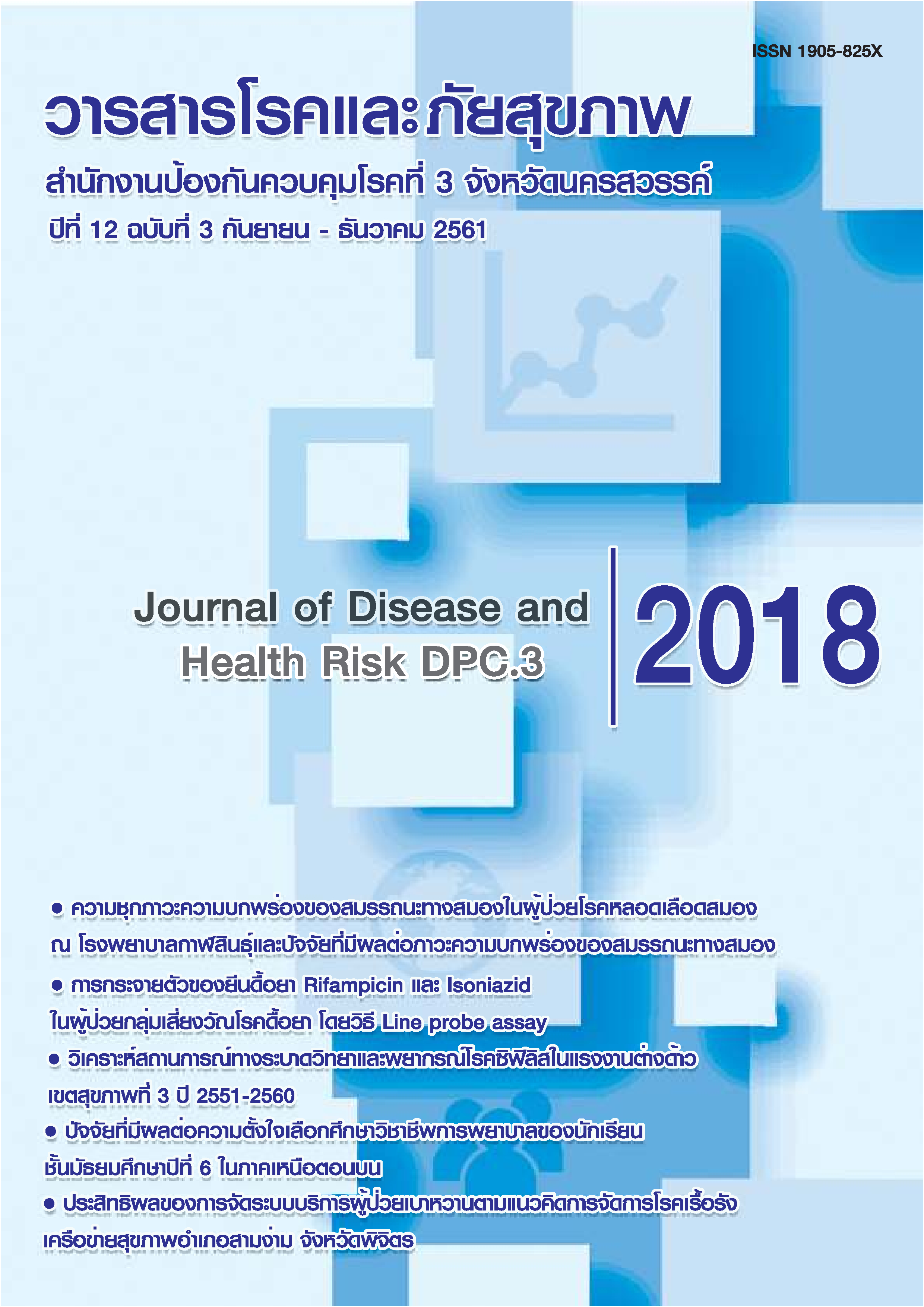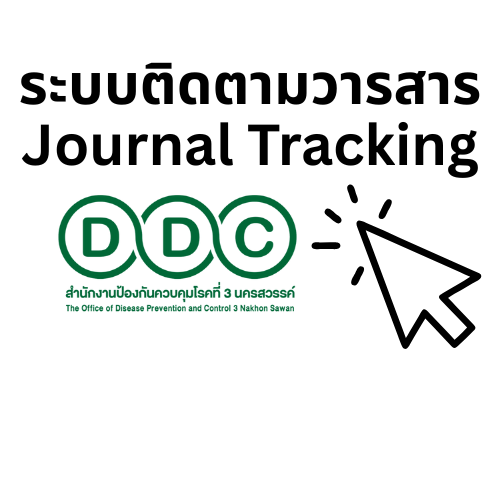Distribution of Rifampicin and Isoniazid resistant genes in tuberculosis resistant patients by Line Probe Assay.
Keywords:
MDR-TBAbstract
The 4th Thailand Tuberculosis (TB) Surveillance (2012-2013) showed the high rate (18.88) of multi-drug resistant tuberculosis in new patients, who had been treated. In this study, we determined spread of multiple drug resistant tuberculosis genes based on the Line Probe Assay (LPA) during April 2016 to March 2016. The cross-sectional descriptive study was designed to analyze the drug resistance gene in patients at risk group of MDR-TB. We found that most of the samples with undetected rifampicin resistant genes was also undetected for Iisoniazid resistant gene. Rifampicin-resistant genes was significantly associated with multiple-drug resistance genes (p-value <0.010). Multiple-drug resistant genes were significantly found in patients who was under the age of 60 years (working age) and were classified as on-treatment (p-value = 0.036). The analysis of mutation pattern based on LPA showed that drug resistance genes detected with wild type gene in the detection of mono-drug resistant genes or the detection of multi-drug resistant genes were no statistically significant differences (p-value = 1.000). The knowledge gained from this study might be applied with screening methods for the detection of multiple drug resistant TB patients in the 3rd Health Area and to be used as a guideline for detection of resistant genes using LPA technique for the medical laboratory, Office of Disease Prevention and Control 3.
References
2. สำนักวัณโรค. คู่มือประเมินมาตรฐาน โรงพยาบาลคุณภาพการดแูลรักษาวัณโรค 2560: สำนักพิมพ์อักษรกราฟฟิคแอนด์ดีไซน์; 2560.
3. สำนักวัณโรค. แนวทางการบริหารจัดการผู้ป่วย วัณโรคดื้อยา: โรงพิมพ์ชุมนุมสหกรณ์การเกษตร แห่งประเทศไทย; 2558.
4. เกวลี สุนทรมน, ลัดดาวัลย์ ปัญญา, ปัทมา มั่นคง ดี, วิไลลักษณ์ หมดมลทิน, วิโรจน์ ตั้งเจริญเสถียร, นริศ บุญธนภัทร และคณะ. การประเมิน อุปสรรคเชิงระบบในการบริหารจัดการวัณโรค ดื้อยาหลายขนาน:กรณีศึกษาในโรงพยาบาลแห่ง หนึ่งในจังหวัดลพบุรี วารสารวิชาการสาธารณสุข. 2560;26(4):770-8
5. สำนักวัณโรค. การคัดกรองเพื่อค้นหาวัณโรคและ วัณโรคดื้อยา. กทม.: สำนักพิมพ์ อักษรกราฟ ฟิค แอนด์ดีไซน์; 2561.
6. Hain Lifescience. GenoType MTBDRplus. Nehren, Germany; 2012.
7. Muhammad Osman, John A. Simpson, Judy Caldwell, Marlein Bosman, Mark P. Nicol. GeneXpert MTB/RIF Version G4 for Identification of Rifampin-Resistant
Tuberculosis in a Programmatic Setting 2014;52:635-7
8. รติพร แกมเงิน, ชัญญานุช ภู่ทิม, บดินทร์ บุตรอินทร์. วัณโรคดื้อยาชนิดรุนแรง (Extensively-drug resistant tuberculosis):.สายพันธุ์ใหม่และความ ท้าทายในอนาคต. วารสารเทคนิคการแพทย์ เชียงใหม่. 2558;48(1):18-28
9. Parveen Kumar, Veena Balooni, Brijesh Kumar Sharma, Virender Kapil, K.S. Sachdeva, Sarman Singh. High degree of multi-drug resistance and hetero-resistance in pulmonary TB patients from Punjab state of India 2013;94:1-8
Downloads
Published
How to Cite
Issue
Section
License
Copyright notice
Article published in the Journal of Disease and Health Risk DPC.3 Nakhon Sawan. It is considered a work of academic research and analysis as well as the personal opinion of the author. It is not the opinion of the Office of Disease Prevention and Control 3, Nakhon Sawan. Or the editorial team in any way Authors are responsible for their articles.
Privacy Policy
Name, address and e-mail address specified in the Journal of Disease and Health Risk DPC.3 Nakhon Sawan. It is used for identification purposes of the journal. And will not be used for any other purpose. Or to another person.









